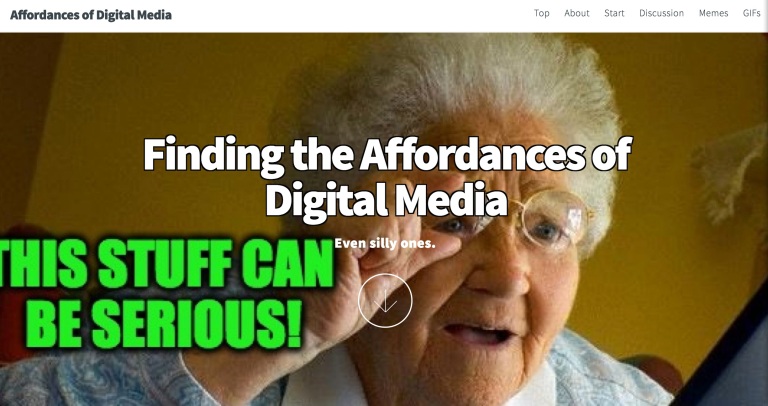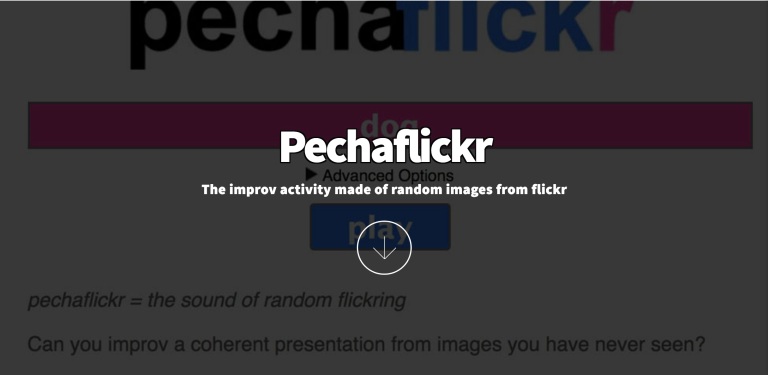Last Thursday, November 9, was a full workshop day at Chisholm Institute in Cranbourne, more than a few clicks south of Melbourne city proper. I was fortunate to have energetic groups for both morning and afternoon workshops.
The topic in the morning was Finding the Affordances of Digital Media– it’s the tagline that gives it away….
“even the silly ones”. In many ways this is a spawn of work done the past two years in the UDG Agora Project, from the Meme Media Studio created by Brian Lamb and the Short Form Video one I did, as well as the Mightiest GIF one I used at a recent workshop for the DML2017 Conference.
It’s reassuring that I do not have to explain what a meme image or GIF is, but interesting to talk about why they have appeal or or widely known. This was the discussion I put under “What is your Silly Media IQ”.
Our first activity aimed at the self referential aspects of memes, their use of pop culture, and like adult humor woven into some cartoons, it sometimes does not matter of one does not know the reference.
One can stretch and try to suggest potential uses of memes in teaching that are for more than the yucks… likely a stretch.

I did try to find some serious ones… there is a “genre” of wholesome memes (and a twitter account thereof)

But what better approach than having people make their own? That was our first activity. Rather than just sending people off to make silly ones… okay, actually that was the first practice, to make ones that poke a pit of general fun at my host Brad Beach, who was so busy he did not attend any of my workshops! This was done with the imgflip Meme generator, using one of the stock images.
Everyone made one, some emailed to Brad. I’ve not heard from him since…
It can be hard to focus people once you let them loose here. But the more “applied” activity is one I call the Most Fascinating Subject in the World Meme:
Hopefully the academic subject you teach or study is extremely fascinating to you. How can you communicate that to others? Why not the simple combination of an image that represents it with a short bit of text on top, e.g. a meme image.
This extends the basic generation of memes slightly, asking people to use their own photo (or one from a site with images licensed for reuse) and something in their area of interest. Participants quickly made their own and uploaded to the Image Collector, where we have a nice collection of Meme Making.
To say the room was boisterous is an understatement. But we were not done, next up a section on Grooving with GIFS, which I almost did not have to explain what animated GIFs are (I respect the one person who did ask for a specific explanation).
GIFs are maybe a bit easier to make a case for when you think of them as very short videos, to show something the naked eye cannot see, to show a process where it helps to see a sequence repeatedly (the best are the teaching sign language gifs).
I shared a few from high school teacher David Theriault, who participated in a workshop I led earlier this year. He shared several his students made which could be thought of a humorous measure of how they feel about school (?)
In the interest of time I decided to skip Find An Animated GIF You Could Teach a Lesson With, but that is, to me, a logical starting place.
Instead, I showed them the Giphy Gifmaker and how we can make a GIF from any YouTube video. I have found in these workshops it helps for the first GIF to have everyone use the same video, so they get the mechanics, which was the activity Many GIFs From One Video (I had selected one of cute Australian animals, like they have never seen them before, right?).
This group all get “A”s- they easily created GIFs and also added their responses to the activity (bottom of the page):
I then directed them to try also, if not in the workshop, but later the Make Your Own GIF from Any Video web trick.
This was quite the output for using a lot of new tools. They certainly did Go Further (with silly media).

In the Afternoon Was Storytelling
The afternoon workshop What Works in Stories? Beyond Telling, Let’s do Storymaking included several morning participants plus quite a few more.
If I say say “Storytelling”, you may conjure the familiar metaphors- cave paintings, campfires, parents reading books. Often it suggests a mode of entertainment. Like most, I have my own internal conversation– “I’m not a storyteller” but I do know can create compelling narratives in teaching that do not give away the plot in the opening objectives.
Rather than defining, constraining storytelling, I share my experiences of creating digital stories and teaching to others of what “works” in formats we know well — books, movies, popular culture. Learn to deploy these elements hands on, with suggestions how you can think of it as more than just a magic spice you sprinkle on your work. A hook of interest, the shape of a narrative, a character to care about, suspension of belief, using less, media metaphors are story techniques that you can integrate into your work as educators.
I may have surprised people by starting a technical workshop without doing technology and asking them to take their key chains out of their pockets– this for an activity I have grown to enjoy and appreciate more each time, the one about keychain stories.
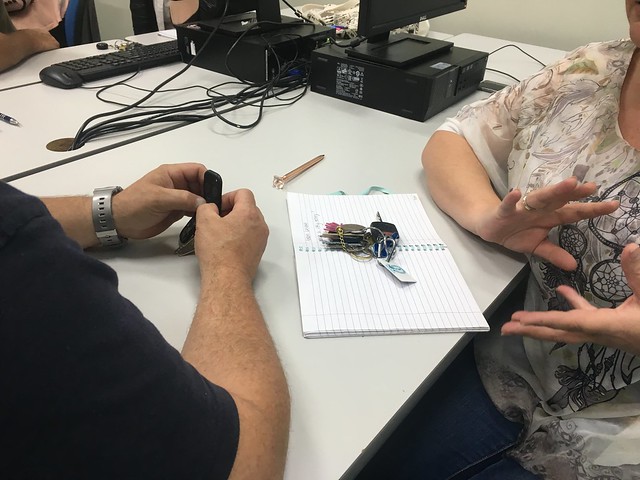
It’s no more than a classic personal object story prompt, done first in pairs. The idea is not to describe your keys, but pick one and talk about what it represents, connects to. This is the format:
- (One minute) Think about which item on keychain you will use.
- (Two minutes) One person starts talking about one item on their keychain, not describing it, but what it means, represents.
- (Two minutes) Switch and the other person shares their store.
- (Two minutes) Combine groups to be four. One person volunteers to share a story (here is the hook), but not their own story, they have to re-tell the story they heard.
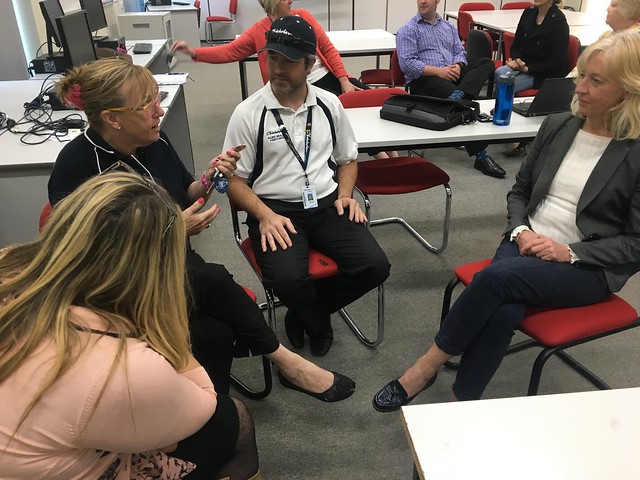
The last part is the powerful jump out of one’s own stories, and is where I can make a case that while we know our stories well, most often in communication we are telling someone else’s story. And it gets to the key skill of listening.
I then went into presentation mode, with an updated of a talk that keeps developing, talking about what works to make stories effective, a lot of examples and methods from film and TV commercials, and the never fail Kurt Vonnegut Shape of Stories video.
Last, I introduced the group and had them do a round of improv over random images with pechaflickr
They chose to do a round with the flickr tag antique. And always reliable, it generated a lot of discussion and excitement over ways to use it.
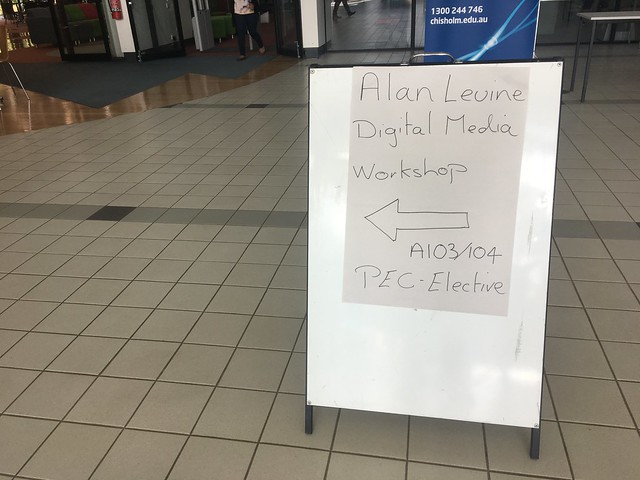
I appreciate greatly the organizing efforts of Brad and Malcolm and all the enthusiasm of the participants from Chisholm for a rewarding day of …. silly stuff.
Featured Image: Hello Chisholm TAFE flickr photo by cogdogblog shared into the public domain using Creative Commons Public Domain Dedication (CC0)
